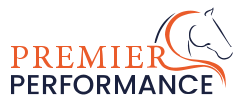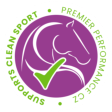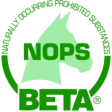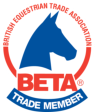in basket
Horse behaviour and learning: Part 1
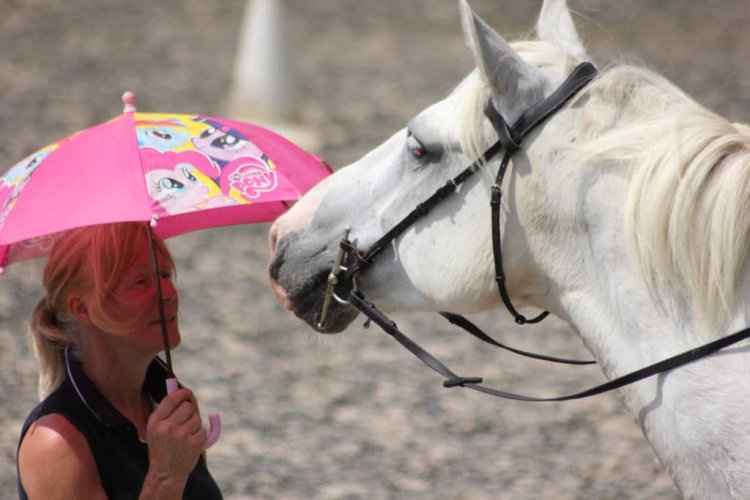
At Premier Performance we are committed to helping you do the best for your horses. Our calming products have been designed to complement good management and training, and with that in mind we asked Professor Jo-Anne Murray, who as well as being an equine nutritionist, is a fully qualified British Horse Society Senior Coach, to build on her previous articles on horse behaviour and talk about how horses learn. Having an understanding of learning in horses can help us to implement successful training programmes and help prevent the development of unwanted behaviours that we may be inadvertently rewarding without realising. Our calming products can be used on a regular basis or at times when you are introducing your horse to new situations that may be stressful for them; for example, when training a young horse or when out competing in a new environment.
Introduction
Behaviour is the product of a complex interaction of an animal’s genes and its environment. Genetics predispose the horse to behave in a certain manner, but the actual behaviour is in fact the result of a combination of genetics and learned behaviour in the environment. Optimisation of management and training requires that we understand the normal behaviour of horses because unwanted behaviours can often result from a lack of knowledge about how a horse ‘perceives’ the world.
Horse behaviour
As I have talked about in previous articles, the horse is a flight animal, that lives in groups and travels over large areas in their natural environment. Whilst being non-territorial, they will defend recourses such as food spots, water and mates. Social contact is very important to the horse, as group living provides protection from predators. As prey animals, horses have an extremely good memory for specific places or situations which were frightening or painful. In order to cope with stressful situations, the horse needs space to ‘escape’. Creating the ‘well adjusted’ horse, one that is able to cope with the demands placed upon it, relies on the animal being well socialised; having positive early experiences; being weaned gradually and thoroughly desensitised and habituated to potentially threatening situations. This allows the horse to be flexible in his behavioural responses due to low fear levels and promotes learning.
Learning in horses
Learning can be defined as “a change in behaviour in the light of experience”, which occurs throughout the lifetime of an animal. Learning means that the horse can adapt its response to a changing environment, which in the wild means increasing its chance of survival especially given that the horse is a prey species. Training in horses works best when we account for the horse’s natural behaviour.
There are various ways by which horses can learn and an appreciation of these types of learning is essential in the understanding of how we can apply this knowledge to training our horses as well as it helping us to understand why and/or how unwanted behaviours may arise, but also to help prevent unwanted behaviours developing. Many unwanted behaviours develop through learning; thus, knowledge of learning theory is important for the diagnosis and treatment of such problems. Furthermore, an understanding of the constraints of an animal’s learning will also aid development of effective behaviour modification programmes.
Types of learning in horses
There are two major categories of learning: non-associative and associative.
Non-associative learning
In non-associative learning the horses is exposed to a single stimulus to which it can become habituated or sensitised. Habituation is when a stimulus is presented so many times that the instinctive response begins to disappear. Horses are what we call neophobic, which means a dislike of anything new or unfamiliar, and therefore new things/situations must be introduced in a gradual and non-aversive manner.
An example of this would be putting a rug on a horse for the first time. If you just throw the rug on without gradually introducing the horse to it then this will be very stressful for the horse and is more likely to result in the horse remembering this as a fearful experience. If done gradually, then the horse becomes habituated to the rug and not fearful of it.
The opposite of habituation is sensitisation, this is when there is an increase in a response after repeated presentations of the stimulus. An example of this is once we have backed a young horse, we can use sensitisation to increase the response to the rider’s leg as we are aiming for the horse to increase its response to this stimulus.
Associative learning
In associative learning, the horse makes links between two stimuli, which is a process also known as conditioning. There are two forms of conditioning: classical and operant.
In classical conditioning the horse gains a response to a new stimulus by association with an old stimulus. Some of you may have heard of the Russian physiologist Pavlov who famously showed that ringing a bell when feeding a dog leads to the dog salivating when they hear a bell ringing, even in the absence of food. The dog is exhibiting the same response to the bell as they would to the food. In horses, an example of this is when racing grooms whistle when they see their horse urinating. Once the association between whistling and urinating is made, the horse then urinates when the groom whistles, which is helpful for post-race urine tests.
Operant conditioning is where an association is made between a given stimuli and the response. Operant conditioning is widely used in horse training and involves the horse making an association between its actions and the consequences of these actions. When the outcome of its actions is desirable for the horse them the behaviour is repeated, whereas if the outcome is undesirable the behaviour is reduced. Thus, the horse is learning to obtain something or avoid something. This relies on what’s called positive or negative reinforcement. For example, a food reward for a horse entering a trailer is a positive reward and so this is positive reinforcement and the horse is more likely to want to go into the trailer again because of this. However, most horse training regimes use negative reinforcement, i.e. horse learns to perform a certain response to avoid or escape a negative stimulus; for example, if the rider applies their leg to the horse’s sides, the horse move from the leg and the rider then removes that pressure, the horse then is more likely to move off the riders leg because it has learned that if it does this, the rider will remove the pressure of the leg. It is very important to note that negative reinforcement is not punishment.
Timing of reinforcement is a very important part of training because this ensures that the horse associates the reinforcement with the actions you intended to reinforce. If you are too late to reward the desired response, then you may inadvertently be reinforcing a different behaviour than you intended to. Reinforcement should occur within 3 seconds of the desired behaviour.
Concluding thoughts
If we understand and appreciate the natural behaviour of the horse and also how horses learn, then we can implement training programmes that are successful and develop our horses in a way that reduces stress and promotes calm and consistent behaviour when being handled and ridden. In my next article, we’ll look at how unwanted behaviours can inadvertently develop and what we can do to help modify these in our horses.
Article written for Premier Performance by Professor Jo-Anne Murray.
